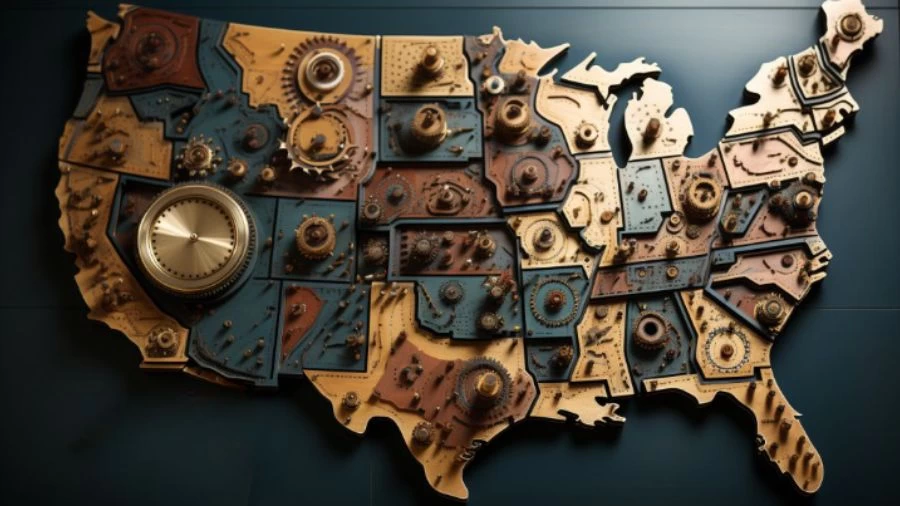
Did the US Labor Market Surpass Predictions in September?
In September, the US labor market exceeded expectations by adding a remarkable 336,000 jobs, nearly double what economists had anticipated and the unemployment rate remained steady at 3.8% in September.
Updated Oct 11, 2023
On This Page
How Many Jobs Did the US Economy Add in September?
In September, the US economy added a remarkable 336,000 jobs, a testament to its continued strength and resilience. This robust job growth, almost double what economists had anticipated, underscores the economy's vitality in the face of various challenges. The unemployment rate held steady at 3.8 percent, unchanged from the previous month, reflecting the labor market's remarkable stability and the overall vigor of the economy.
Did the US Labor Market Surpass Predictions in September?
In a remarkable turn of events, the US labor market outperformed expectations in September, adding a staggering 336,000 jobs, nearly double the rate anticipated by economists. This robust hiring trend, coupled with upward revisions of job additions in July and August, signals the economy's resilience in the face of rising interest rates.
Amid the Federal Reserve's efforts to rein in inflation, the job market's unexpected strength has ignited hopes for a "soft landing" scenario, where price growth stabilizes, averting the looming threat of a recession.
The monthly labor report, a closely monitored indicator of the nation's economic health, held the headline unemployment rate at 3.8% in September. Notably, the leisure and hospitality sectors played a pivotal role in bolstering payroll growth, contributing 96,000 jobs, while government employers added 73,000 positions.
As the Federal Reserve prepares for its upcoming rate-setting meeting on Halloween, the labor market's robust performance is poised to impact policy decisions. This substantial job growth has prompted market experts to believe that interest rates may remain elevated for an extended period and increases the likelihood of another rate hike by the Fed before year-end. This unexpected surge in labor activity offers a glimmer of hope for the US economy, even in the face of interest rate headwinds.
What is the US Labor Market?
The U.S. labor market, often called the job market, is where people who want to work (employees) meet with businesses and organizations that need workers (employers). It's a crucial part of the economy, just like the markets for money, goods, and services. Understanding how the labor market is doing can be a bit complicated, but a few key things help us figure it out.
One important thing is unemployment. When the economy is going through a tough time, there aren't enough jobs for everyone who wants to work. This leads to more people being without jobs, which we call unemployment. High unemployment rates are bad for the economy, as they can slow down economic growth, cause social problems, and prevent many people from having fulfilling jobs.
Explore the intricate web of Economy with MarketsHost, where you can access valuable information on credit cards, insurance, and banking.
Is the US Labour Market Tight or Loose?
The US labor market is undeniably tight as we step into 2023. This tightness is evident in the fact that there are two job openings for every unemployed person, a ratio that has never been higher according to Bureau of Labor Statistics data. This trend is not easing, with job openings consistently increasing for the past three months.
The causes of this imbalance are subject to ongoing debate. Some attribute it to temporary factors like COVID-19 concerns and the wealth accumulated during the pandemic. However, longer-term trends, such as an aging population, reduced immigration, declining labor force participation among men, and a surge in early retirements, are also contributing to the labor supply constraint.
Is America Still in a Labor Shortage?
Yes, America is still experiencing a labor shortage, and the situation is concerning. There are currently 4.7 million more job positions available than there are people to fill them in the United States. This means there are approximately 1.7 open jobs for every unemployed worker, indicating a significant labor shortage.
The problem is exacerbated by the fact that many individuals who could work have chosen to exit the workforce. The labor force participation rate, which tracks working-age people who are either employed or actively seeking employment, is currently at 62.5%. This is the lowest rate in nearly 50 years, indicating a substantial number of people opting out of the job market.
Did the US Labor Market Surpass Predictions in September - FAQs
1. Did the US labor market perform better than expected in September?
Yes, the US labor market added 336,000 jobs in September, surpassing expectations.
2. What were economists' expectations for job growth in September?
Economists had anticipated lower job growth in September, making the actual figure of 336,000 jobs added a positive surprise.
3. How do the September job additions reflect the US labor market's health?
The strong job growth in September indicates the continued resilience of the US labor market and overall economic strength.
4. What was the unemployment rate in September?
The unemployment rate in September remained at 3.8%, unchanged from August.
5. How did the stock market and interest rates react to the September jobs report?
Following the release of the September jobs report, 10-year US Treasury yields reached their highest levels in 16 years, and stock indices on Wall Street experienced declines, as investors considered the possibility of further interest rate hikes by the Federal Reserve.




